power
Latest
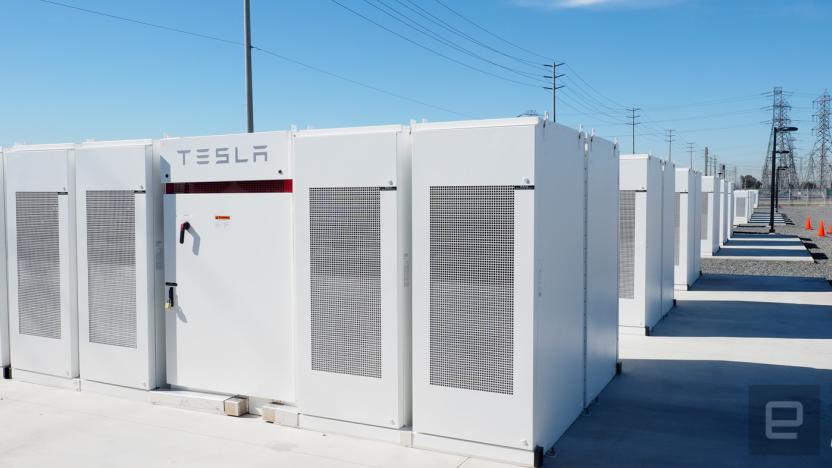
Tesla pledges to fix Australian state's power woes
Lyndon Rive, co-founder of Solar City and head of Tesla's energy division, believes that his company could fix an Australian state's energy woes in just 100 days. Rive was talking to Australia's Financial Review, claiming that Tesla could build between 100-300MWh of battery storage in that short a time. It's a bet that his cousin (and boss) Elon Musk was eager to take up, later tweeting that Tesla would do the work for free if it missed that deadline.

Meizu fires back at Oppo with its own high-speed phone charging
Last year, Oppo rolled into Mobile World Congress with what seemed like the fastest battery-charging tech in town. These days, the Chinese company is still eager to show off its impressive, periscope-inspired smartphone camera, but Meizu has been more than happy to pick up where Oppo left off. Now, in fairness, Meizu's Super mCharge isn't quite as fast as Oppo's SuperVOOC solution, but it's still damn fast. Specifically, it can take a 3,000mAh battery from zero to full in 20 minutes -- and it might be a little safer too.
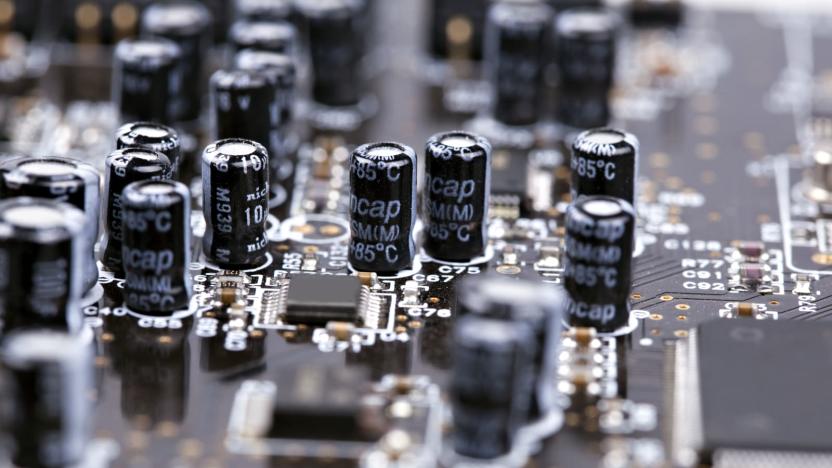
MIT researchers built an energy-sipping power converter
Researchers from MIT's Microsystems Technologies Laboratories have built a new power supply system designed specifically for powering electronic sensors, wireless radios and other small devices that will eventually connect the Internet of Things. While most power converters deliver a constant stream of voltage to a device, MIT's new scheme allows low-power devices to cut their resting power consumption by up to 50 percent.
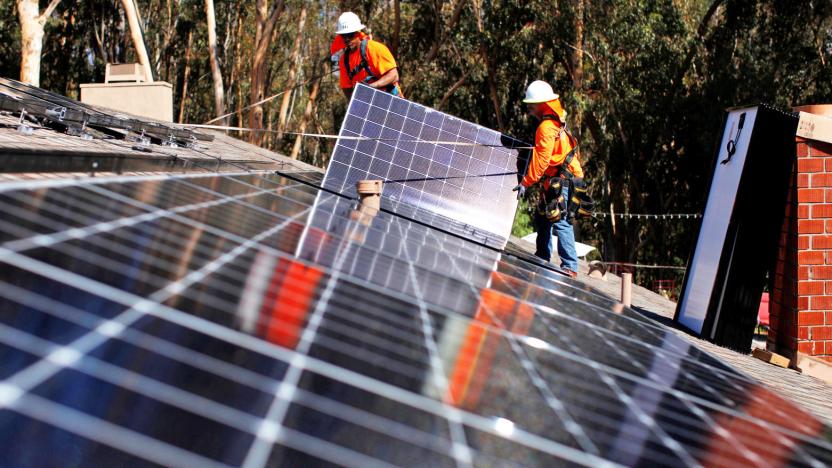
Liquid battery could last for over 10 years
Modern batteries aren't hampered so much by their capacity as their long-term lifespan -- a lithium-ion pack can easily become useless after a few years of heavy use. That's bad enough for your phone, but it's worse for energy storage systems that may have to stick around for the long haul. If Harvard researchers have their way, you may not have to worry about replacing power backs quite so often. They've developed a flow battery (that is, a battery that stores energy in liquid solutions) which should last for over a decade. The trick was to modify the molecules in the electrolytes, ferrocene and viologen, so that they're stable, water-soluble and resistant to degradation. When they're dissolved in neutral water, the resulting solution only loses 1 percent of its capacity every 1,000 cycles. It could be several years before you even notice a slight dropoff in performance.
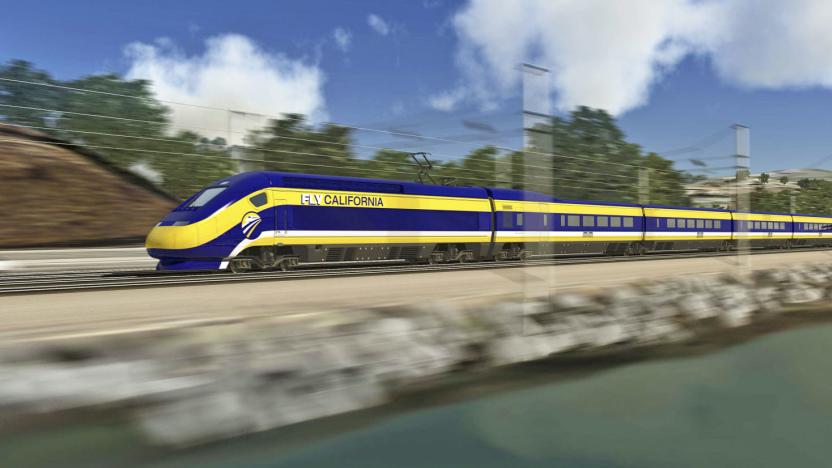
California Republicans want to block high-speed rail funding
A 14-member contingent of the California GOP have sent a letter to newly-installed Transportation Secretary, Elaine Chao, asking that the DOT halt approval of a $650 million dollar grant for an electrification project that would have directly benefitted the proposed bullet train system running between San Francisco and San Jose. That grant would have gone to California's Caltrain agency (as early as this week) and be used to install a power system for the future train system. The letter cites cost increases and a lack of private funding as reasons to defund the project.
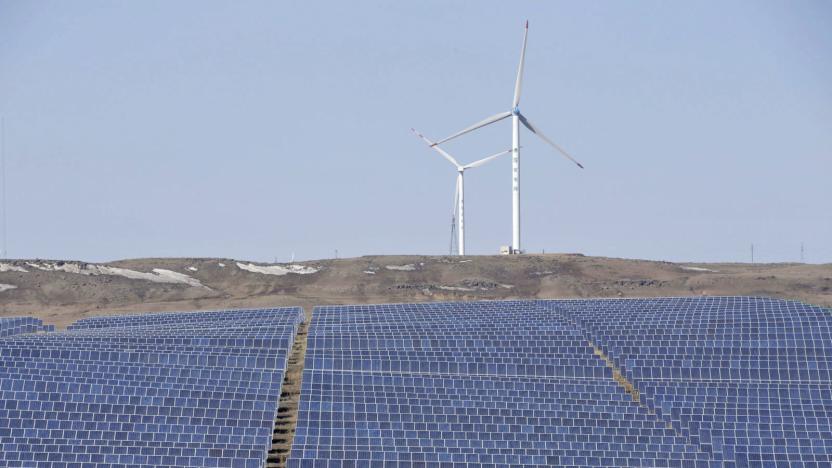
China is now the biggest producer of solar power
You probably don't think of China as a clean energy champion given its frequent problems with smog and continued dependence on coal power, but you may have to rethink your views after today. The country's National Energy Administration has revealed that its solar power production more than doubled in 2016, hitting 77.42 gigawatts by the end of the year. The country is now the world's biggest generator of solar-based electricity in terms of capacity -- it doesn't compare as well relative to population (Germany, Japan and the US could easily beat it), but that's no mean feat for any nation.
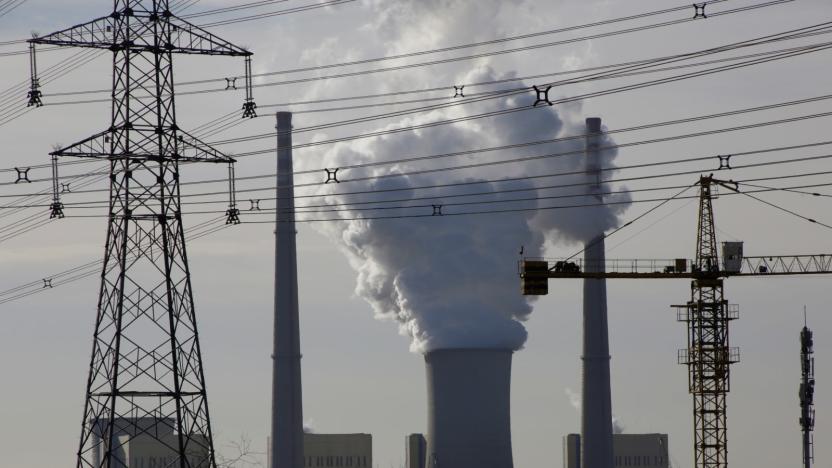
China suspends plans for 85 coal power plants
China is taking some steps to curb pollution (it doesn't have much choice), but one of its most recent steps may be more of a happy accident. The country's National Energy Administration is suspending 85 planned or in-progress coal power plants -- not because they're threats to the environment and public health (which they are), but because they don't fit in with China's latest Five Year Plan. It's targeting a coal capacity limit of 1,100GW, but the plants would have brought it to 1,250GW. While that's still an increase over the current 920GW capacity, it's definitely an improvement.

SpeedX's Unicorn bike knows how much effort you're putting in
SpeedX is back with another "smart" road bike that promises to track your rides with a sleek, blemish-free design. The Unicorn is a sequel to the Leopard, which I took for a spin last June, and comes with a new, detachable bike computer on the stem. It has a 2.2-inch touchscreen and runs a custom version of Android, clearly indicating your current, average and maximum speed, among other information. Despite its color display, SpeedX says the new "SpeedForce" computer will be visible in direct sunlight and last more than 20 hours on a single charge. There's also a wireless button on the handlebars for convenient screen switching.

Japan axes its 'fast' nuclear reactor prototype
Japan's Monju reactor was supposed to be a more efficient alternative to conventional nuclear power. The "fast," sodium-cooled prototype plant would produce more plutonium than it ate up, making it relatively easy to recycle fuel. However, that's not how it worked out. A leak and fire led to a 15-year shutdown starting in 1995, and the reactor has been plagued by failures, mismanagement and political fights ever since. And now, the government has had enough: it's planning to close Monju once and for all. It would be slower and more expensive to fully restart the reactor than to shut it down (the equivalent of $4.6 billion versus $3.2 billion), officials claim, and the focus is on developing more practical fast reactors instead.

Solar beads can make some very cool lamps and flashlights
Conventional solar panels aren't exactly the prettiest objects on the planet, which is why companies like Tesla, SRS Energy and SunTegra have been focusing on blending this technology into roof tiles. As for those who don't have a roof or land to spare, Japan's Kyosemi Corporation has come up with an alternative solution that can let windows and glass walls soak up solar power as well. The magic ingredient? Just a web of "Sphelar" solar cell beads -- each with a diameter of 1.2 mm -- lined up inside any transparent substrate, meaning it can come in any shape or form while letting light travel through the gap between beads. Better yet, due to the spherical nature of these cells, they can capture light from almost any angle -- to the point where they can deliver a higher cumulative output than their conventional counterparts, according to the company.

MIT's sensor network tracks your power-hungry appliances
You get a bill from your electricity provider every month laying out how much energy you used, but there's no easy way to get a breakdown of which appliances suck down the most juice. But the US Navy has partnered with MIT scientists to design a cheap, portable sensor network that tracks the power drain of each of your domestic devices.

New magnetic field theory gets us closer to nuclear fusion
Researchers from the US Department of Energy (DoE) and Princeton University have developed a new theory on plasma that could help scientists figure out solar flares and fusion power. Most fusion research is focused on "magnetic confinement" reactors that use powerful magnets to fuse hydrogen plasma into helium. One of the biggest problems with that technique is that the plasma itself spawns new magnetic fields, which play havoc with the reactions.

Tesla runs an entire island on solar power
Now that Tesla has officially acquired SolarCity, it's not wasting any time showing what the combined entity can do. Tesla has revealed that it's running the island of Ta'u (in American Samoa) on a solar energy microgrid that, at 1.4 megawatts, can cover "nearly 100 percent" of electrical needs. It's not just the 5,328 solar panels that are key -- it's the 60 Tesla Powerpacks that offer 6 megawatt-hours of energy storage. While Ta'u is normally very sunny, the packs can keep it running for three days without sunlight. They don't have to worry about a cloudy day leading to blackouts.

Toyota could abandon hydrogen in favor of EVs
Toyota has been vocal in its belief that hydrogen-powered vehicles like the Mirai will eventually replace gas and diesels. But this insistence makes the company's recent decision to launch a long-range EV similar to the Tesla such a surprise. Reuters (via Nikkei) is reporting that the carmaker will quietly reverse its longstanding resistance to pure all-electric vehicles in the very near future. It's believed that Toyota will launch a new EV with a range of around 186 miles on a charge by 2020 as it looks to make all of its products emissions-free by 2050.

White House plan will train coal workers for 21st century jobs
Stepping away from fossil fuels is incredibly important, but our move toward a sustainable future will invariably leave countless workers unemployed by no fault of their own. The White House knows this and this week, the Obama administration announced $28 million in funding for 42 "economic and workforce" development programs across a baker's dozen of (mostly southern) states.
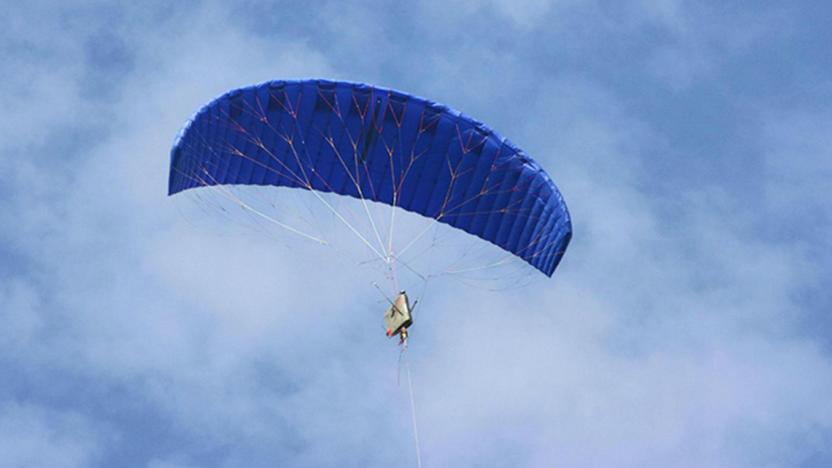
Part of Scotland will soon be powered by kites
Name a method of generating power that's cheap, efficient, sustainable and sounds like something Mary Poppins dreamed up after downing 20 teaspoons of sugar. That's right -- kite power. One of the world's first non-experimental, kite-driven power stations will be established offshore in Southern Scotland, at the Ministry of Defence's West Freugh Range near Stranraer. UK company Kite Power Solutions plans to install a 500 kilowatt system that it expects will generate 'several hundred megawatts' of energy by 2025, Independent reports.
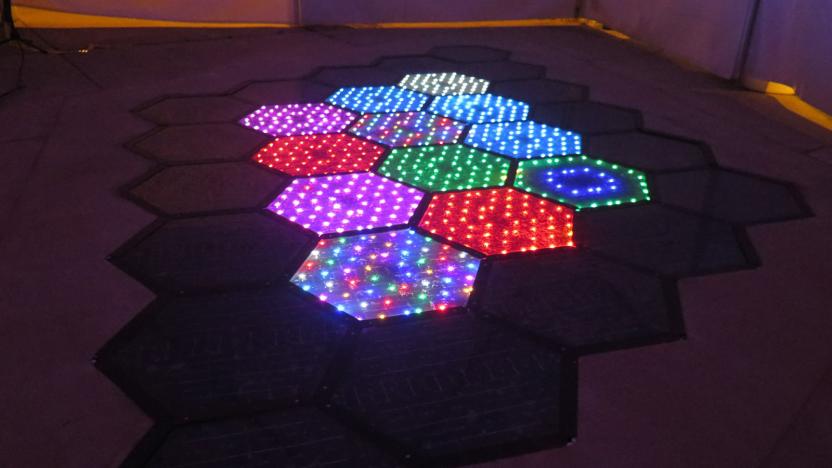
Solar road tiles get their first public test
No, that's not an elaborate new Lite-Brite kit-- that's the possible future of energy. After years of work (and some last-minute delays), Solar Roadways has installed its first public energy tiles in Sandpoint, Idaho as part of a test. On top of producing a light show, the panels will generate power for the fountain and restrooms in a public square. They have heating elements, too, so they should keep running even in the heart of winter. And if you're not sure how well they'll work in practice, you can check on them yourself -- Sandpoint has a live webcam pointed at the tiles.

Future medical wearables could be powered by body heat
Researchers at NC State think that they have developed a new way to harvest body heat and turn it into electricity. The team has developed a patch that's roughly a centimeter squared, that would attach to a person's bicep. The device would then be able to generate anything up to 20 Microwatts, a significant increase on previous technologies. It's not enough to power a smartwatch, but it's possible that it may be enough to juice a medical sensor, reducing the number of bulky cables a patient has to trail around them.

Scientists dream up a power station staffed by bacteria
If The Matrix is to be taken as a serious manifesto for the future of technology, then living organisms are a great source of potential energy. Now, a team at Oxford University has given some weight to the idea after successfully simulating a biological power station. Researchers used computers to model the behavior of bacteria as it swam around a liquid suspension. When they subsequently added a network of donkey wheel-like structures, the bacteria began moving in predictable patterns around the wheels. The motion was sufficient to generate tiny amounts of energy that could be used to power microscopic gadgets.

Mandalay Bay installs America's biggest solar roof
The Mandalay Bay Convention Center in Las Vegas, NV is now home to the largest roof-top solar array in America. The array consists of 26,000 individual panels and produces enough power to meet roughly 25 percent of the convention center's energy requirements. The two other largest casinos along the strip, presumably The Venetian and the Wynn, have also reportedly installed solar panels in efforts to reduce their electricity bills. The state of Nevada as a whole has set an ambitious goal of producing a quarter of its electricity from clean sources by 2025. That's no small feat given that the Bellagio and Mandalay Bay alone consume more electricity annually than all of Key West, FL, a city with a population of 25,000 but which hosts roughly 2.5 million visitors each year.









